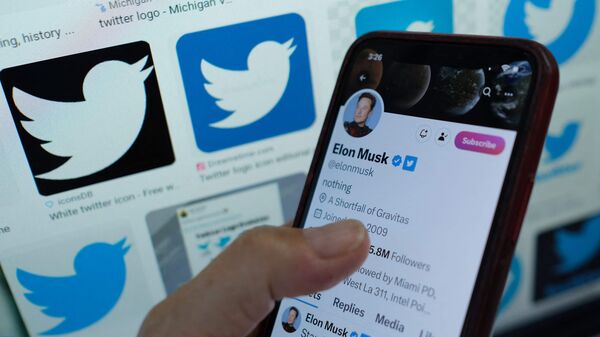The latest in a rapidly lengthening line of gaffes came on 20 April, when Twitter stripped erstwhile verified users of their blue checkmarks, as Musk had promised, only to restore the badges of accounts with over a million followers a few days later for unspecified reasons. To describe Musk’s management style as seat-of-the-pants would be a huge understatement.
A short history of the blue tick
To understand the strange journey of Twitter’s blue tick, we need to go back to 2009. Believe it or not, the reason Twitter introduced the verification badge is that a Hall of Fame baseball player was impersonated on the platform. Tony La Russa sued Twitter after an account impersonating him mocked his two arrests for drunk-driving. The platform quickly began verifying celebrities to thwart impersonators and avoid any more lawsuits. Soon after, it began verifying organisations and – to combat the growing problem of fake news – journalists.
But Twitter’s method of handing out blue checks was opaque and somewhat arbitrary – it never specified the criteria for getting one. Some anonymous accounts with large followings and usually posting humorous content also came to be verified. Despite this, blue checks soon became a status symbol.
Musk monetises the checkmark
When Musk took over at Twitter, he promised to democratise the platform’s verification system by letting anyone acquire a blue tick – for a price – and making it part of the company’s premium offering, Twitter Blue.
Apart from getting a blue tick, Twitter Blue users could post tweets longer than 280 characters and high-res videos longer than 60 seconds, edit tweets, and see fewer ads. They also got prominence in replies and in the revamped ‘For You’ tab, which now contained a mishmash of popular and tweets to improve engagement on the platform.
Twitter also introduced a gold checkmark for organisations, charging ₹82,300 ($1,000) a month for the main account and ₹4,120 ($50) a month for each affiliate account.
Predictably, this caused plenty of confusion, as several impersonator accounts quickly signed up for Twitter Blue to get a blue tick and make it look like they were the real thing. Pharmaceutical giant Eli Lilly lost $15 billion in market cap when a fake but verified impersonator account tweeted “insulin is free now”. (There was a silver lining, however – the company later announced it would slash the price of the life-saving injection by 70% and cap it at $25 a vial.) It was only then that Twitter began to actually verify the identities of accounts signing up for Twitter Blue.
Blue-tick bullying
An unintended consequence of monetising the blue tick was that Twitter Blue subscribers were labelled as such, while the badges of previously verified users were described as ‘legacy’ verifications. With one click of a user’s blue tick you could see if they were one of the old elite or had – heaven forbid – paid for a blue tick. After those in the second group began to be ridiculed and even harassed, Twitter stopped labelling legacy verified accounts and Twitter Blue accounts differently.

View Full Image
But users quickly discovered they could still find out if an account was ‘legacy verified’ by checking if it was followed by @verified. Twitter responded with yet another band-aid – @verified stopped following its nearly 500,000 legacy blue-tick accounts.
Musk announced that all legacy verified users would lose their blue ticks on April 1, but this didn’t come to pass. Meanwhile, many celebrities and organisations publicly stated they wouldn’t subscribe to Twitter Blue to keep their blue ticks. Meanwhile, Musk stripped the New York Times’s main account (@nytimes) of its blue tick mark, though affiliated accounts such as @nytimesbooks and @nytimesworld continued to enjoy their verified status.
Musk eventually said accounts with unpaid blue ticks would lose them on 20 April, a day associated with marijuana use. On April 21, almost all legacy verified accounts lost their blue ticks, including organisations that didn’t pay for Twitter Blue. Mint’s official handle @livemint too lost its verification badge in the great purge.

View Full Image
However, some accounts mysteriously retained their blue ticks despite not paying for Twitter Blue, including those of authors Stephen King and Neil Gaiman, and basketball player LeBron James. Musk later confirmed in a tweet that he was personally paying for Twitter Blue for these accounts, to which King replied that he should instead donate the money to a Ukrainian non-profit.
Return of the checks
By April 23, all legacy accounts with over a million followers started magically getting their blue ticks back. These were all labelled as having subscribed to Twitter Blue — a blatantly false claim.

View Full Image
Several celebrities said their accounts were once again verified even though they hadn’t paid for Twitter Blue, attempting to distance themselves from the once-coveted badge. Amid the chaos, Twitter re-verified several accounts of people who had died, including Bollywood actor Sushant Singh Rajput and assassinated journalist Jamal Khashoggi.
In late December, Musk admitted to making mistakes in the two months since taking over the company. “My error rate in being the Chief Twit will be less over time, but in the beginning, we’ll make, obviously, a lot more mistakes, because I’m new to… hey, I just got here, man,” Musk said on the All-In Podcast.
Four months on, it looks like the Twitter CEO’s error rate is only getting worse.
Download The Mint News App to get Daily Market Updates.
More
Less
#Mint #Explainer #Twitters #blue #tick #status #symbol #laughing #stock



